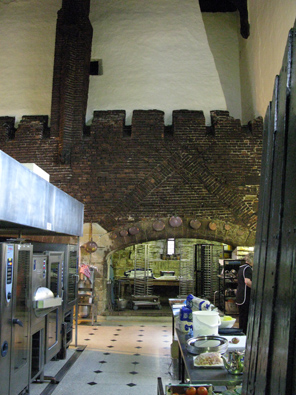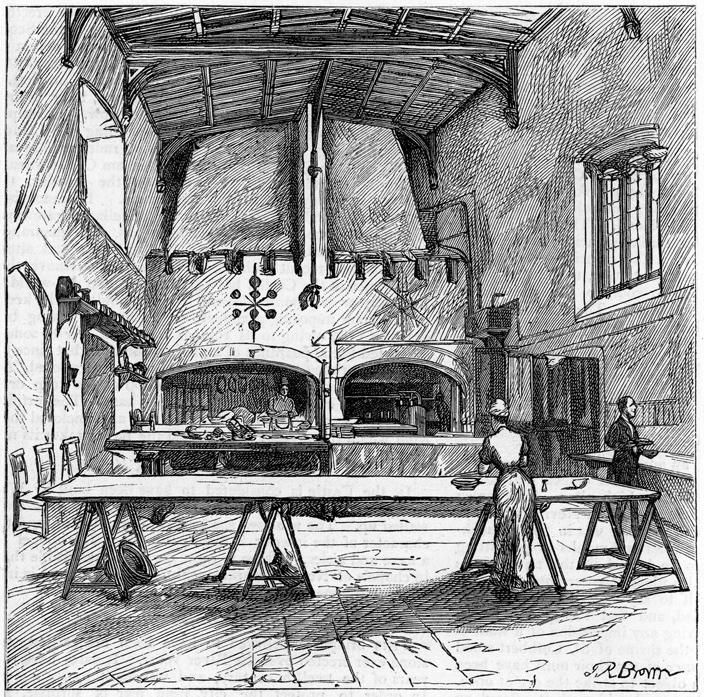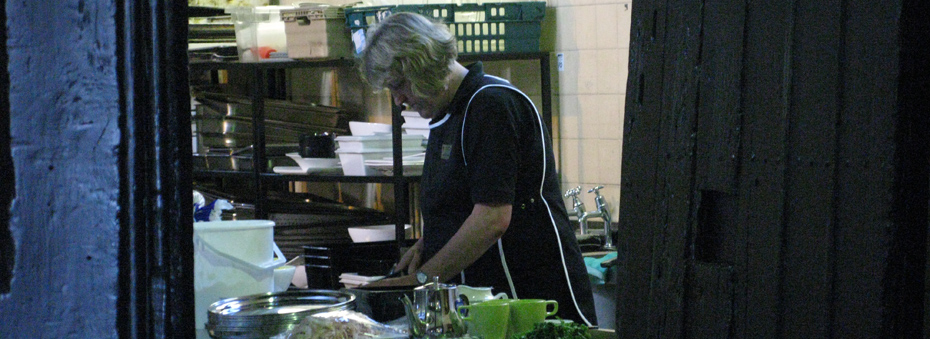
The kitchen: a fifteenth century structure with twenty-first century equipment.
© Jeffrey Veitch
The kitchen and buttery date from the end of the fifteenth century, from the time of Bishop Fox (Bishop of Durham, 1494-1501).
A Norman window under one of the fireplaces is an indication that Fox did not actually build an entirely new structure, but remodelled an older Norman construction, perhaps a defensive tower.
Fox's motto, a pelican piercing its breast, can be found on the wooden screen between the kitchen and preceding buttery, as can his motto, "est deo gratia".
Perhaps the most remarkable thing about the kitchen, other than its monumental scale, is that it has been in continuous use since it was first built in 1499.
The term "buttery", the area before the kitchen, comes from the French word "boterie", which was originally a place where wine was stored. This became a common term for a larder, but has no direct connection with the making or storage of butter!

The emblem of Bishop Fox, a pelican piercing its breast, followed him where his career took him: to Winchester, and then to Oxford, where he founded Corpus Christi college.

The Castle kitchen, as it looked in the 19th century, before the introduction of the modern equipment. The kitchen tables, one of which has a table-top probably dating to the 14th or 15th century, were removed due to Health and Safety legislation. Fortunately they still survive in the Castle. (The heavier one was carried by the college rugby team all the way up to the Castle's uppermost level. It can now be seen in the Norman Gallery.)

